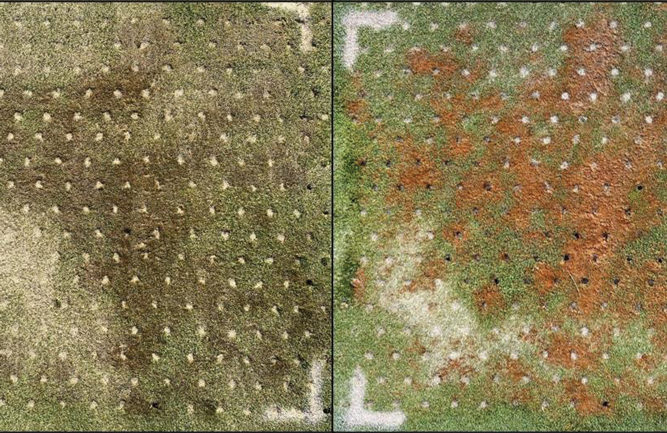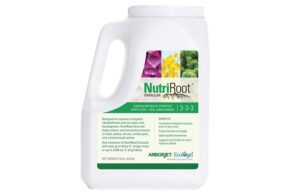Super Science: Moss control in putting greens
Silvery thread moss (Bryum argenteum) is an undesirable weedy species that colonizes golf greens across the U.S. and has proven difficult to eradicate. Zane Raudenbush, Ph.D. at Ohio State University, initiated field studies to test the effectiveness of two soil surfactants and Quicksilver (carfentrazone-ethyl) on moss growth in creeping bentgrass putting greens.
In September 2020, he conducted a replicated field experiment at Hawks Nest Golf Course in Creston, Ohio, and Scioto Country Club in Columbus, Ohio. He applied four chemical control strategies, along with aerification at both locations.
The four chemical control strategies were: 1) drench application of Dawn Ultra dish soap, 2) drench application of sodium dodecyl sulfate (SDS), 3) spray application of Quicksilver herbicide at 3.3 fl oz per acre and 4) untreated control.
Two levels of hollow-tine aerification (with or without aerification) occurred one day following the chemical applications. The plugs were removed from the 3-foot-by-3-foot aerified plots, and holes were backfilled with dry sand.

Plot treated with drench application of SDS and hollow tine aerification one day after treatment (left) and three days after (right). (Photo courtesy of Zane Raudenbush)
Treatments were applied on Sept. 15 and Oct. 9. Percent of silvery thread moss cover in each plot was measured using a rating grid at trial initiation and every two weeks thereafter until mid-November.
Drench applications of Dawn Ultra dish soap and SDS rapidly injured silvery thread moss shoots at both locations. Minimal injury to creeping bentgrass (less than 5 percent) was observed from the initial application on Sept. 15, but a slight increase in phytotoxicity was observed from the Oct. 9 application.
Quicksilver also caused a significant amount of injury to the silvery thread moss shoots, but the overall control was less than the drench applications of Dawn Ultra and SDS. A previous field experiment has demonstrated hollow-tine aerification can reduce the size of a silvery thread moss infestation by providing “available sites” for the desirable turfgrasses to reestablish.
In this study, an aerification hole created within a silvery thread moss colony that was not treated with a chemical control typically healed within four days. However, aerification holes created in moss colonies treated with a chemical control strategy remained open for several weeks.









